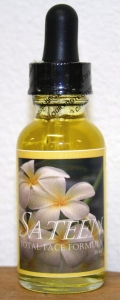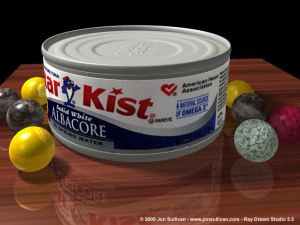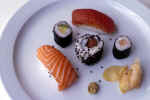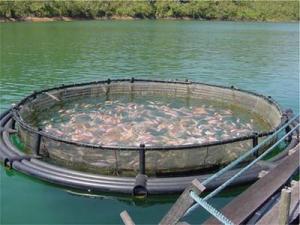Posts tagged ‘organic’
Are the Chemicals in Your Facial Moisturizer Harming You?

Don’t you love that fresh clean feeling just after you wash your face?
Then you may put on a moisturizer (especially if you are maturing like myself (:)
It makes your skin feel smoother and it may even give you a glow?
We are doing this so our skin is healthy and moisturized to keep it looking young and less wrinkled.
But do you know what chemicals you may be putting in your body? Do you know they may be doing you more harm then good?
Before getting into learning about health – I never thought about it. I used whatever lotion I had, thinking I was doing my skin a favor. What I didn’t know was how awful for me the chemical filled lotions were.
Here are a few examples of common ingredients in moisturizers:
Why does the FDA allow ingredients like these in products that are applied to the largest organ we have – our skin?
Lovely! Any ingredients.
Well they wouldn’t knowingly add harmful ingredients – right?
Facial moisturizers are put on your face 1-2 times a day! I know I don’t want to take the chance….
For woman who are thinking of having children, according to this study, will most likely affect your unborn children.
Look at this study:
World Wildlife Fund (UK)
- 30 new-born babies
- Blood tests taken from the umbilical cord
- Analyzed for the presence of 35 chemicals
- Every baby tested positive for chemicals
- Chemicals found have suspected links to birth defects, genital abnormalities, and certain types of cancer
- All babies contained at least 5 of the 35 chemicals
- Some contained as many as 14 of the 35 chemicals
If you want something that moisturizes and much more and it only contains three ingredients that are so natural you eat them – give Sateen Facial Oil a try!
Sateen is a proprietary, organic, and all-natural citrus blend  of Orange and Lemon Oils in a base of Sweet Almond Oil that works as an effective all-in-one facial product.
of Orange and Lemon Oils in a base of Sweet Almond Oil that works as an effective all-in-one facial product.
You are worth it. Your face deserves it. Your skin will thank you.
To Your Health!
Is Fish or a Can of Tuna REALLY THAT Bad for You? Your Kids?

If you are a 140 lb woman eating 1 6 oz can of Albacore Tuna = you are getting 140% of the EPA limit of Mercury exposure! For a 65 lb. child eating 3 oz. = 150% of the EPA limit of ‘safe’ mercury exposure.
In other words, there is way too much mercury to consider it “SAFE” to eat in my opinion. (Which sucks because I love tuna. And so does my daughter – which was something different to give her besides the daily PB & J.)
So about 4 years ago when I got into eating ‘organic’ & ‘healthy’ foods – I quit buying tuna and most foods from the typical grocery store. I am delighted to see that a lot of stores these days at least have a small section with organic choices, although I look forward to a time when that is how most food is sold!
At first, I thought the can of Tuna on the shelf in the ‘healthy’ whole food store must be OK, Right?
It made me wonder what the difference was. So I did a little searching online.
My first great discovery – a website called GOT MERCURY? – (very cute.. ) It has a ‘Mercury Calculator‘ so you can put in your weight and the type of fish (even differentiating between albacore, yellow fin, and light tuna) to find what your mercury exposure is.

 There is even an ‘Advanced Calculator’ for people who consume more than 1 serving a week! Brace yourself – you will be shocked at how much mercury you may be consuming!
There is even an ‘Advanced Calculator’ for people who consume more than 1 serving a week! Brace yourself – you will be shocked at how much mercury you may be consuming!
Here is what I found for myself and the fish I like –
- Tilapia – 0%
- Salmon – 0%
- Scallop – 20%
- Flounder – 20%
- Crab/Shrimp – 20%
- Cod – 30%
- Light Tuna – 50%
Now the NOT so good list – (I ate occasionally and will now be avoiding!)
- Mahi Mahi – 60%
- Halibut – 90%
- Lobster – 110%
- Yellow fin Tuna – 120%
- Albacore Tuna – 130%
- Orange Roughy – 200%
I did find this interesting the sight about Tuna –
For some reason – I always thought Albacore was the good one to get – wow was I wrong!
Then I found in a Dr. Mercola article – that Mercury is NOT the only worry–
Other Contaminants include:
Think that Farm Raised means cleaner healthier fish? Think again!
Unfortunately, my fish consumption is rare because of this information which is a shame because it is so good!
I didn’t realize how unhealthy Tuna was so I wanted to share what I’d learned. We all hear that our oceans are contaminated but I was shocked at how badly.
Why this continues to happen? Another blog….
To Your Health!
Money Is Tight so What Fruits & Veggies Should I Buy Organic & Which Can I Buy Conventionally Grown?

In today’s economy you may be feeling the pinch. Even if you aren’t, you may be more aware of how much you are spending. Either that is what is happening to me, or food prices just continue to climb! Probably both.
But I am a believer in eating organically. It is a fact that organically grown food has a higher vitamin/mineral content than conventionally grown produce.
Besides that I prefer to eat my fruits & veggies without all the pesticides and insecticides that conventionally grown produce offers you. If you want to know why it is better to NOT consume these dangerous chemicals – that is a whole other blog!
So what to do when my shopping list is bigger than my budget and I’m out of coupons? Buy some stuff that isn’t organic. It doesn’t thrill me but sometimes you gotta do what you gotta do.
What then is the ‘must have’ organic produce? Which are OK to buy non-organic?
Announcing a new update to an old favorite: it’s the 5th edition of EWG’s classic Shopper’s Guide to Pesticides, now with the latest government data. This handy guide shows you the fruits and veggies with the most and least pesticides, so you know which to always buy organic and which are pretty clean even when conventionally grown.
The Full List: 47 Fruits & Veggies
| RANK | FRUIT OR VEGGIE | SCORE |
| 1 (worst) | Peach | 100 (highest pesticide load) |
| 2 | Apple | 93 |
| 3 | Sweet Bell Pepper | 83 |
| 4 | Celery | 82 |
| 5 | Nectarine | 81 |
| 6 | Strawberries | 80 |
| 7 | Cherries | 73 |
| 8 | Kale | 69 |
| 9 | Lettuce | 67 |
| 10 | Grapes – Imported | 66 |
| 11 | Carrot | 63 |
| 12 | Pear | 63 |
| 13 | Collard Greens | 60 |
| 14 | Spinach | 58 |
| 15 | Potato | 56 |
| 16 | Green Beans | 53 |
| 17 | Summer Squash | 53 |
| 18 | Pepper | 51 |
| 19 | Cucumber | 50 |
| 20 | Raspberries | 46 |
| 21 | Grapes – Domestic | 44 |
| 22 | Plum | 44 |
| 23 | Orange | 44 |
| 24 | Cauliflower | 39 |
| 25 | Tangerine | 37 |
| 26 | Mushrooms | 36 |
| 27 | Banana | 34 |
| 28 | Winter Squash | 34 |
| 29 | Cantaloupe | 33 |
| 30 | Cranberries | 33 |
| 31 | Honeydew Melon | 30 |
| 32 | Grapefruit | 29 |
| 33 | Sweet Potato | 29 |
| 34 | Tomato | 29 |
| 35 | Broccoli | 28 |
| 36 | Watermelon | 26 |
| 37 | Papaya | 20 |
| 38 | Eggplant | 20 |
| 39 | Cabbage | 17 |
| 40 | Kiwi | 13 |
| 41 | Sweet Peas – Frozen | 10 |
| 42 | Asparagus | 10 |
| 43 | Mango | 9 |
| 44 | Pineapple | 7 |
| 45 | Sweet Corn – Frozen | 2 |
| 46 | Avocado | 1 |
| 47 (best) | Onion | 1 (lowest pesticide load) |
Note: We ranked a total of 47 different fruits and vegetables but grapes are listed twice because we looked at both domestic and imported samples.
GET THE GUIDE
Find out what changed about bananas, carrots, and spinach (among others), and get a printable version of the wallet-sized guide.
Hope this helps you in making decisions when shopping!
To Your Health!

Don’t Give Up Your Chocolate! Try this Healthy Version…
Dark Chocolate Goji Berries!
I found these in my local co-op from a company called Extreme Health USA.
A couple of days a week I get an urge for chocolate. So instead of giving it up, I’ve changed what kind of chocolate I’ll eat.
For the most part, I will only eat organic dark chocolate because of the increased antioxidant properties with less of the unhealthy part – namely sugar. These use organic evaporated cane juice instead of the refined white sugar found in most chocolate.
I love these bite size chocolate covered berries because of their taste – but check out the health benefits:
|
COMPARE
Antioxidant Levels |
|
|
FOOD
|
ORAC Units*
|
|
Goji Berry
|
25,100
|
|
Prunes
|
5,700
|
|
Raisins
|
2,830
|
|
Spinach
|
1,260
|
|
Brussel Sprouts
|
980
|
|
Broccoli
|
890
|
|
Oranges
|
750
|
|
Cherries
|
670
|
|
* ORAC units (Oxygen Radical Absorbance Capacity Scale) is a measure of the ability of antioxidants to absorb oxygen “free radicals”; 3000 units is considered an industry standard for health.
Extreme Health’s Goji Berry is 25,100 units. |
|
So if you get that chocolate craving- give these a try! They also come in other flavors like Cappuccino, milk chocolate, and pomegranate yogurt.
To Your Health!
Milk … Why Your Kids Don’t Want to Drink it. Are They On to Something?
My daughter would NOT drink milk from about 4 years old until last year at 11.
Did her taste buds change – No, not really.
Before getting into learning about health – I tried to give her regular, pasteurized skim milk. It is said to be healthy for her, but she would not drink it (except to put on her cereal and throw what was left away after eating).
It didn’t really make sense to me since she was not a finicky eater and she ate just about any vegetable I put in front of her and she loved fruit. So why wouldn’t she drink this healthy drink? What was the problem?
Maybe (as most kids do) she instinctively knew what her body needed. What I found after researching milk was that pasteurized, homogenized milk is NOT ‘healthy’ as advertised. Even though some of the stars look kind of cute with the white mustache and the slogan “GOT MILK?”
So what changed at 11 years old that she began drinking it?
I gave her raw milk. One sip, then she finished the glass, then she asked for more!
Where did I get it? At – Sunset View Pastures Farm, an Amish farm in Cochranville, PA. They are located at –
Steve and Katie Stoltzfus
751 Saw Mill Road
Cochranville, PA 19330
610-299-6726
Not only do they have the most amazingly delicious dairy, eggs, and beef products, they are wonderfully friendly and knowledgeable.
How did I find them? Online on www.LocalAmishFarms.com
It is a site dedicated to farms, and farmer markets in the Southeastern Pennsylvania area that offer locally raised, organic and pesticide-free produce, dairy, meats.
I know, if this is new to you, you might be thinking that can’t be safe, or that has to be fattening, if it was so much better for you, than why is there only pasteurized, homogenized milk in the grocery store?
I know, I wondered that as well.
Safety – There are many sites out there that talk about the differences between raw and pasteurized milk. The main consensus is this – raw milk from organic grass fed cows in a cleanly facility is better than pasteurized milk.
Why? Because pasteurized milk is heated which kills all bacteria (the good and bad) leaving it without the digestive enzymes, and nutrients that are the ‘good’ for you part. Here is a blurb from a Dr. Mercola newsletter on raw milk –
The big determining factor about the safety of milk is what the cows are fed and the facility it is produced at. I found this youtube video at another great informative site – www.raw-milk-facts.com.
As nature does in making things with a purpose, raw milk fat actually has multiple purposes – like assisting with the absorption of calcium, and in Dr. Mercola’s newsletter he says that it also assists in the development of muscle and supporting the thyroid.
Check out all three of these sites to learn more about the benefits of raw milk! It really is eye opening … then you can make your assumption on why most groccery stores only offer pasturized milk.
I will continue to drive to the Sunset View Pasture’s Farm to get my milk, eggs, and more.
I can now say that my daughter loves her milk!


